Longtime Partners in D.C. Provide Sanctuary and Services in Ever-changing Nation’s Capital
EDITOR’S NOTE: this piece was written before the February announcement of the year-end closure of the Washington AIDS Partnership. As the Partnership’s history and leadership is deeply felt within this piece, we will continue to monitor for coverage of this story.
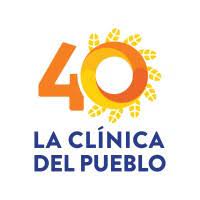
It’s Friday afternoon, and after a long week, Catalina Sol has one last task on her to-do list: a late Fall fundraiser for La Clinica del Pueblo in Washington, D.C. She will be there with fellow staff, sharing successes and challenges. Word is, qualitative and quantitative data pair well with hors d’oeuvres. This is one of La Clinica del Pueblo’s core, general support fundraising events. Sol is the executive director and has been since 2019, providing leadership through some tumultuous times including the COVID-19 pandemic, and a rapid influx of migrants seeking sanctuary. She is poised for action and quite familiar with her beloved organization, having been there since the 1990s.
La Clinica’s main campus sits in Columbia Heights on 15th Street, a short distance to Mount Pleasant and Adams Morgan — all neighborhoods steeped in rich Latino history. The organization emerged after war displaced tens of thousands of Salvadorians, Guatemalans, and Hondurans — many of whom found a home in the nation’s capital. Since its founding in 1983, La Clinica has expanded to four locations, including in Maryland. And today, La Clinica remains a trusted institution and a safe haven for Latinos seeking quality health care.
Sol is keenly aware of how funding streams undergird La Clinica’s mission, which is supported by a combination of federal and city dollars and private philanthropy.
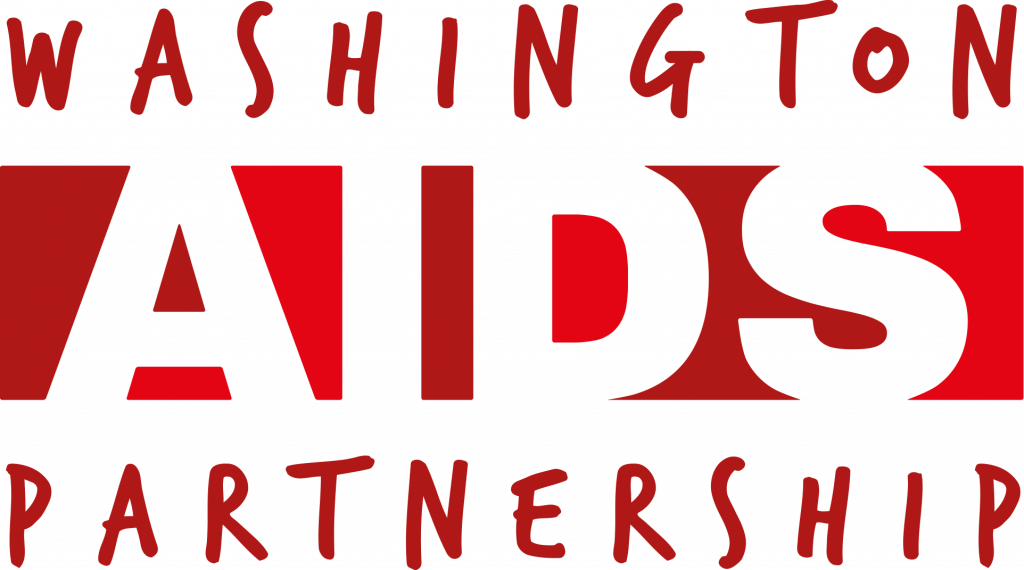
One private institution that has been instrumental in their support of D.C.-area HIV service organizations is the Washington AIDS Partnership (WAP), a consortium of funders — private and public — committed to improving health conditions in terms of HIV prevention, care, and treatment. Since 1989, the Partnership has granted nearly $35 million, including more than $7 million raised from national sources, reaching thousands of people.
“WAP has been a key component of our ability to incubate, innovate, and develop in HIV predating me,” Sol said. “They’ve been very intentional about having the funds; not just filling in funding gaps but moving the needle forward in some areas where there aren’t enough funds for this particular population, intervention, or area.”
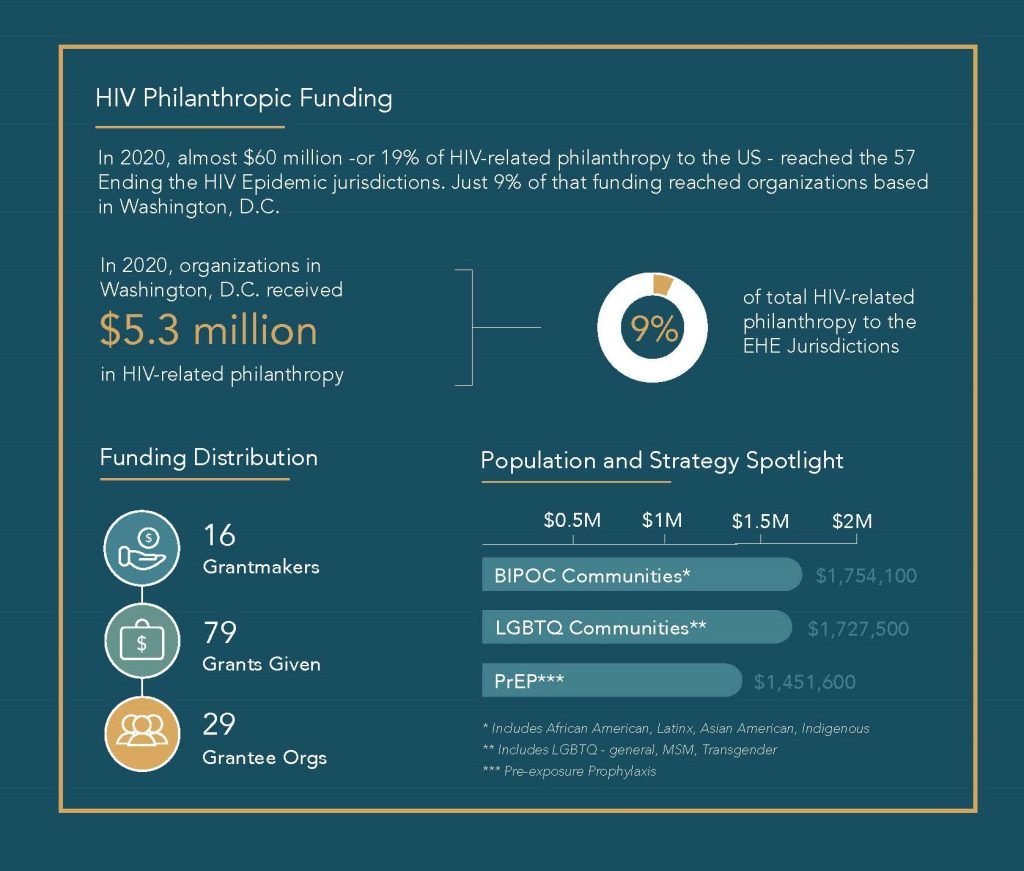
Beyond grantmaking, WAP advances public policy initiatives, and provides technical assistance to local nonprofits to increase capacity and expertise. They convene local government, providers, funders, and other stakeholders to implement innovative strategies to reduce HIV risk and improve the lives of people living with HIV (PLHIV). Each year, WAP recruits and mentors a team of young people who provide direct volunteer service in the community through its Health Corps Initiative, a program of AmeriCorps. Sol credits WAP, namely its executive director J. Channing Wickham, with bringing together resources from private funders. WAP is “the de facto convener in the absence of that happening in other spaces,” she said.
“The partnership has been a really great vehicle to support more organizations and also support advocacy within the city,” said Sarah Hashmall, Program Officer at The Morris and Gwendolyn Cafritz Foundation,
The Cafritz Foundation is another key philanthropic player in the District, and one of the 20 funders comprising WAP. It is the largest private independent foundation focused exclusively on the DC region, donating more than $507 million to arts and humanities, community services, education, the environment, and health since 1970.
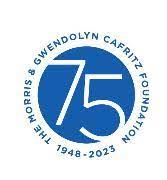
Much of Hashmall’s job is listening. She learned early on in her career in HIV: Nothing about us, without us. When considering grantees, a top qualification is how community-driven the organization is. When she landed in Washington, DC in 2009, she was a Health Corps program fellow as part of WAP. Today, 13 years later, she is the program officer of the Health and Wellness portfolio at The Cafritz Foundation. She continues to follow the lead of community, including grantee La Clinica.
“La Clinica has such deep roots within their community and embodies what it means to be driven by community in so many ways,” Hashmall said.
Sol, a natural storyteller, doesn’t shy away from name-dropping sister organizations doing remarkable HIV work besides her own. She’s adamant about sharing recognition with Whitman-Walker Health and Us Helping Us, People into Living. She credits her background as what informs much of the tenor of her leadership. Dating back to 1998, she was La Clinica’s HIV Program Director.
“It completely shaped [my leadership]… and gave me a window into how healthcare and public health strategies look when those who are most affected are at the table in a very meaningful way, not just in name,” she said. “La Clinica was founded with the concept that health is a human right, and by people who very much believed that it should be the patients who are leading, patients who are telling us what the needs are, and that they should be at minimum equal partners.”
Sol has seen HIV’s evolution from AZT (an antiretroviral medication) being the only treatment option to combination therapy with protease inhibitors, leading to the Ryan White CARE Act, and the adoption of PrEP (pre-exposure prophylaxis). Today, much of the conversation is focused on ending the epidemic, and U=U (Undetectable = Untransmittable). She recognizes that none of these initiatives move forward without meaningful community engagement.
Today, the resources from various funding streams, both public and private, help La Clinica del Pueblo’s work focused on the Ending the HIV Epidemic in the U.S. initiative (EHE). The initiative, spearheaded by the U.S. Department of Health and Human Services, directly funds 57 jurisdictions with the highest HIV prevalence and aims to reduce new HIV cases by 90 percent by 2030. Washington, D.C. is one of the fifty-seven jurisdictions.
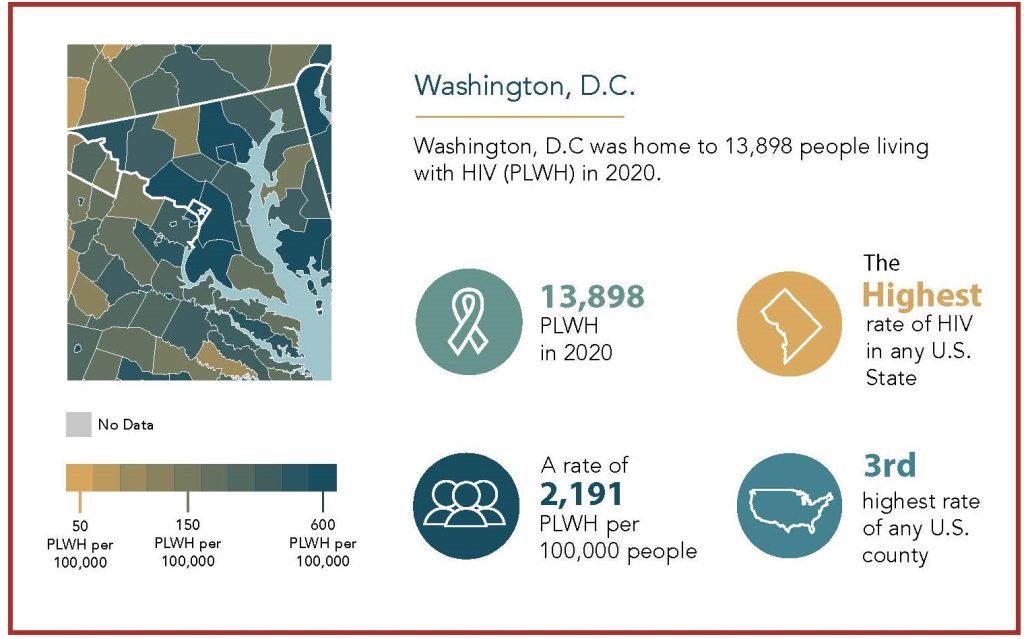
While federal EHE funding is sometimes more prescriptive in how money is spent, private philanthropic funding from Cafritz Foundation, as a stalwart of WAP, allows for greater flexibility, and better positions La Clinica to improve health outcomes for community members.
As a generalist funder, The Cafritz Foundation doesn’t solely fund HIV within its Health and Wellness portfolio. It’s essential to break through silos, Hashmall said. Other sectors ranging from harm reduction, LGBTQ rights, housing, maternal health, and reproductive health also receive positive impact. These can all intersect with the education, community services, artsand humanities, and environment portfolios, not only programs solely focused on HIV. This also provides autonomy for recipients to redirect funds when the circumstances shift, as well. When organizations were scrambling to respond to COVID-19 in early 2020, general operating support floated organizations without pressure.
The Cafritz Foundation trusts its grantees to use funds in the most strategic way they see fit.
Most recently, a group of Southern governors have put many Venezuelan and Nicaraguan migrants on charter buses with one-way tickets to Washington, D.C., Chicago, New York, and Martha’s Vineyard, Massachusetts. More than 230 buses carrying nearly 9,400 migrants have arrived in D.C., according to The Washington Post. The Cafritz Foundation leveraged additional funding to help the community respond to this urgent need.
“If an organization needs to redirect general operating funding to support migrants coming to the area on a bus, or if there’s another emergency, or whatever the need is, that is up to them,” said Hashmall. She recounted how La Clinica was able to send volunteers to meet migrants at D.C.’s Union Station and offer medical services to new migrant patients, including someone with an advanced pregnancy who hadn’t received any prenatal care. “It’s been really impressive to see what organizations have done.”
La Clinica is a grantee of WAP, which serves as a funding collaborative, as well as being directly funded by The Cafritz Foundation. The work of La Clinica’s 100 employees, 50 health promoters, and a bevy of volunteers is astonishing. Together, The Cafritz Foundation and WAP remain committed to bolstering La Clinica’s valiant efforts through their collaborative and respective grantmaking mechanisms.
“This is what a model of healthcare and an integrated continuum of prevention and care and a community of care can look like,” said Sol. “Not just should look like but can look like.”